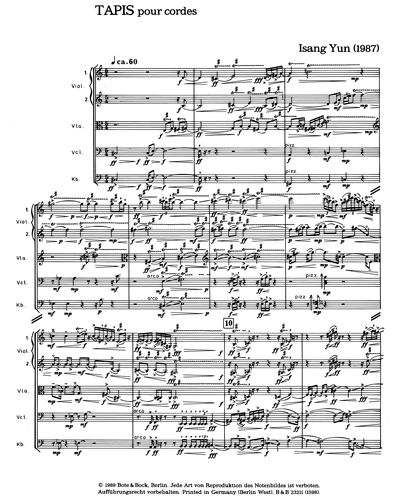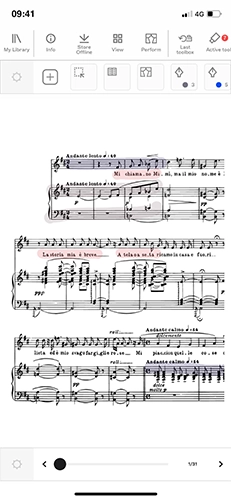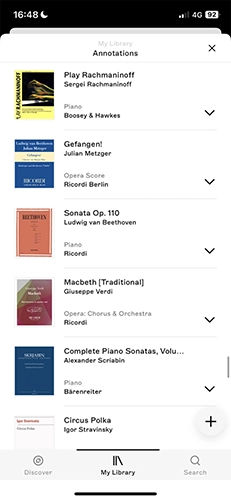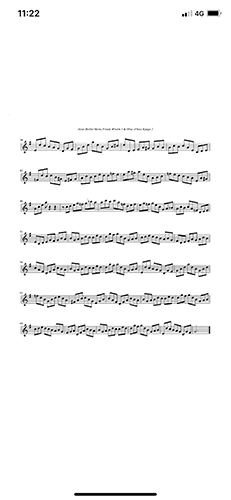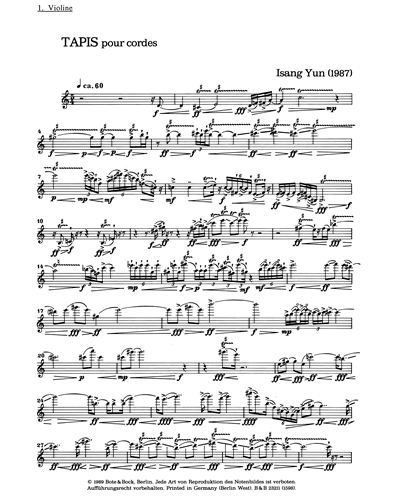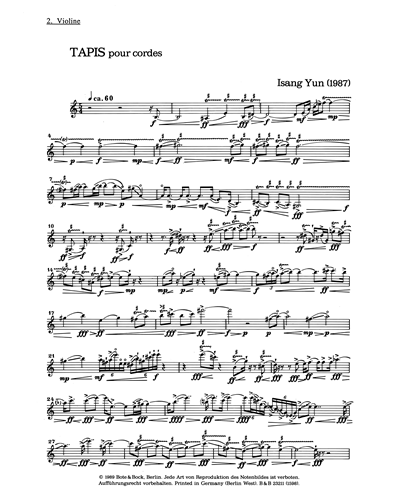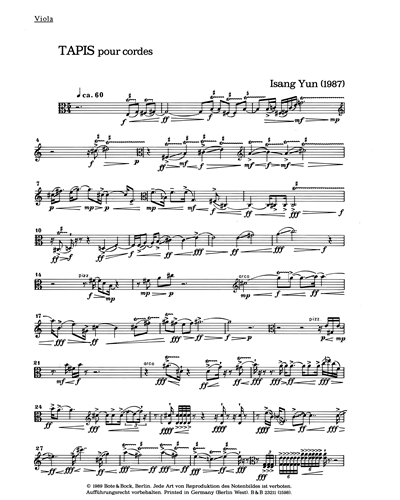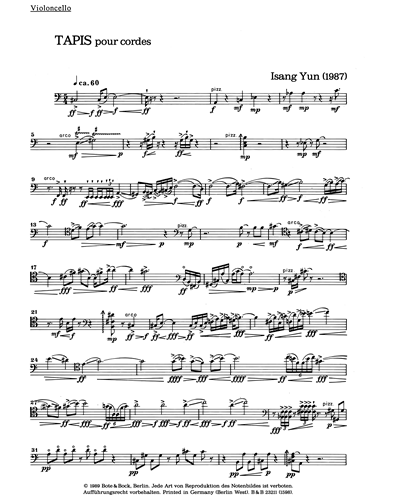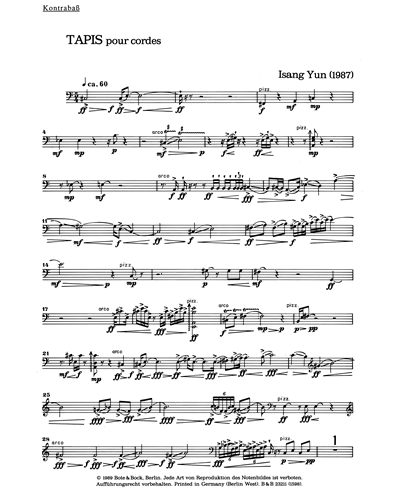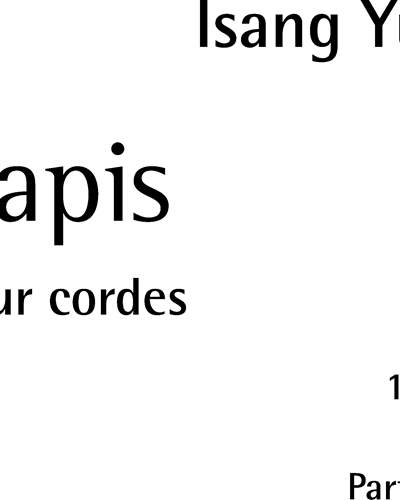
Tapis
available materials
Full Score, Violin 1, Violin 2 ... see all
nkoda sheet music library
over 100k editions from $14.99/month
Hassle-free. Cancel anytime.
available on
nkoda digital sheet music subscription


Editions
Annotate
Library
Perform
100k+ available Editions
INSTITUTIONAL PARTNERS
PUBLISHERS PARTNERS
TESTIMONIALS
More about Tapis
The title Tapis – meaning carpet, fabric – refers to the fabric-like structure of sound surfaces which confirm Yun's view of the note as a 'brushstroke', as a string of sounds. Tapis, which can be performed by both solo instrument and string orchestra, is woven of small and minuscule intervallic cells. On the other hand, the arrangement of such cells into chains leads to broad melodic developments in an almost symphonically dense air. The virtuoso work shows an almost symmetrical tripartite form with the tempo characteristics fast – slow – fast. Yun divides the five-part setting into the sound groups of the low and high strings, with the viola taking a mediating position and entering into changing alliances with the violins or the basses. The sequence of the first nine bars anticipates the overall form – at least the fast outer sections – on a small scale: Small intervals are dominating; powerfully articulated motivic cells expanded by trills and glissandos into strings of sounds are forced up – heavenward – until bar 7 and then plummet rather abruptly into the depths. The melodic development is carried by the high strings which are rhythmically supported by pizzicato impulses of the low strings. In the following, the structure is determined throughout by Yun's principle of 'change of roles': In bar 9, the low strings take up the melodic air of the violins and are given a rhythmic shape by short two-note motifs of the upper parts. In the contrasting middle section, Yun displays the cantabile style of a dolce setting. In the final third section, he achieves an extreme escalation and extreme expression by using massive conglomerations of sounds, rhythmic and gestural amalgamation processes, extreme dynamics, and extremely high positions. Walter-Wolfgang Sparrer (1999)

Tapis sheets music on nkoda


